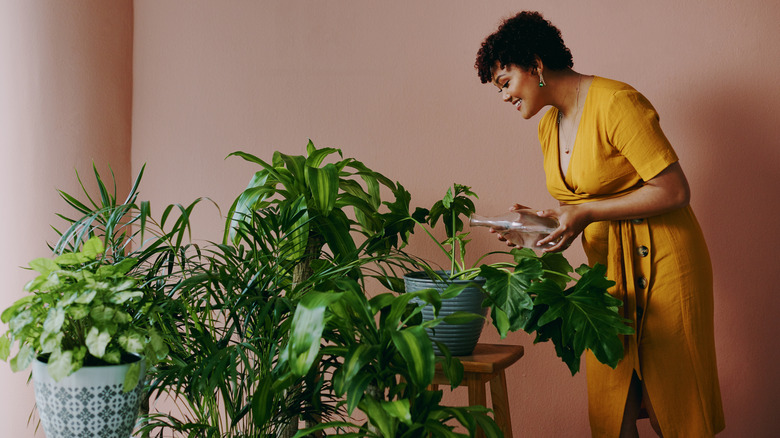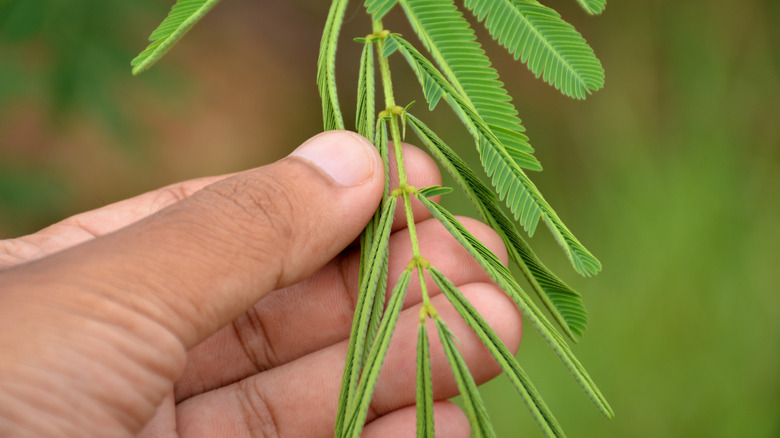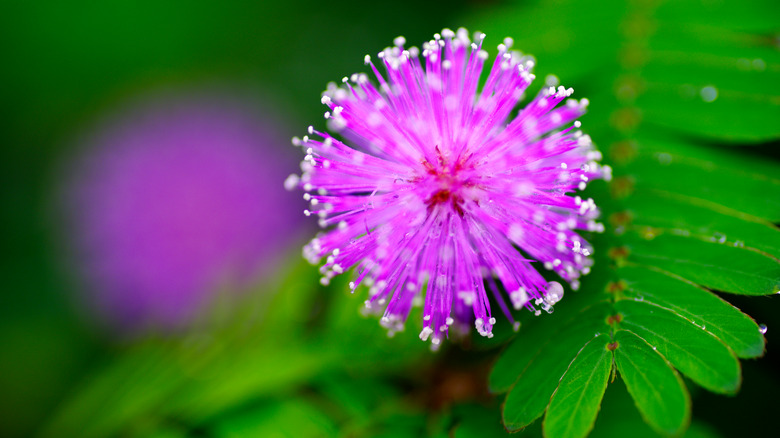The Flowering Weed You'll Want To Grow Indoors And Not In The Garden
If you are among the not-so-lucky group of people who don't have outdoor space for gardening and are limited to indoor plants, mimosa pudica — also called a sensitive plant — is here to make your plant parent dreams come true. The sensitive plant is native to Central and South America, as well as the Caribbean. It can be easily identified by its small and spiny green subshrubs that are lightly covered in tiny hairs, and features adorable, round pink puffs when in bloom.
There are many reasons why sensitive plants are perfect to grow indoors, like the fun trick they do when the leaves close up when you touch them, or the fact that they open and close in response to light, all of which are harmless defense mechanisms the plant deploys against herbivores. Sensitive plants usually don't grow more than 11 to 15 inches in height. If you don't have a big space, you need plants that can thrive in small spaces, making them ideal for tiny apartments and your office desk. Although they are considered an invasive weed in areas with warmer climates, they are perfectly safe to grow indoors where they won't pose a threat to other plant species.
How to grow your sensitive plant
Sensitive plants can be grown from seed or sourced from your local nursery, and can occur naturally in outdoor spaces due in large part to how easily their seeds are spread by the wind. They need loamy soil with good drainage to promote proper root growth and to prevent root rot. When growing them indoors, it is best to place the plants by the window that gets the most sunlight in your home so they can get the 6-7 hours of direct sunlight they need to grow. Sensitive plants don't do well in soggy soil, so a weekly watering schedule should be enough to do the trick.
They don't necessarily need fertilizer but you can help things along with a slow-release high-potassium fertilizer if you wish. Sensitive plants are resilient flowers that even beginner gardeners can handle. Although common house plant pests won't pass up the opportunity to spin their webs in your plant's pretty pink pom poms, there are quick and easy ways to get rid of bugs on indoor plants such as non-toxic horticultural oils and sprays you can make at home. You may need to repot your plant as it grows.
Sensitive plants in the home
The pink flowers on sensitive plants are one of the reasons these flowering weeds so popular among plant lovers, but the fluff and pollen content can trigger allergic reactions for people in your home. The National Health Institute recorded a 31% risk for allergic reaction among people who work with plants and are at risk of coming into contact with this pollen, but only a 1.2% risk among the general population in a study conducted in the Mediterranean — a warm and humid climate. While the pollen in sensitive plants may trigger allergic reactions, the allergens must not be confused with toxicity in the plants itself. Sensitive plants are still considered safe to grow and house as indoor plants.
Another issue plant owners may face with growing their sensitive plants in the house as opposed to outside is that, much like the bugs who weave their webs on the plant's puffs, pets like cats and dogs may also be tempted to touch the pink pom poms or play with the leaves, while this may not be toxic, it might damage to the fragile spiny leaves.


